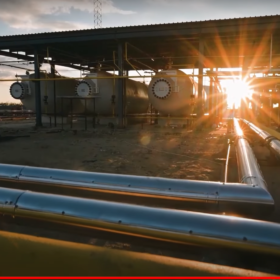JSW Energy secure Letter of Award for 400 MW solar project
JSW Neo Energy has received a Letter of Award from NTPC to set up a 400 MW interstate transmission system (ISTS) connected solar power project.
Stable GPM polysilicon prices post-antidumping duty rates, optimism on firm demand
In a new weekly update for pv magazine, OPIS, a Dow Jones company, provides a quick look at the main price trends in the global PV industry.
US targets 50 GW of solar in 2024
The United States is expected to grow its solar fleet by more than 25% from 2023 levels, with over 8 GW of distributed solar and more than 40 GW of utility-scale solar expected to be installed.
ISA, USAID sign MoU to advance grid interconnections
The International Solar Alliance (ISA) and the United States Agency for International Development (USAID) will work together to establish and expand clean energy transmission networks across regions such as South Asia, the Persian Gulf, Southeast Asia, and Africa, supporting the development of a unified grid to facilitate the large-scale transfer of clean power.
Bolstering energy transition through green hydrogen
By offering incentives for green hydrogen production and manufacturing electrolyzers, the government of India is making it easier for players to enter this space and scale up technologies. The focus on public-private partnerships is crucial to this effort, ensuring that both the public sector and private companies collaborate efficiently to make green hydrogen a reality impacting masses.
Torrent Power raises INR 3,500 crore through QIP
Top investors include SBI Mutual Fund, Kotak MF, NPS Trust, New World Fund, American Funds Insurance Series Global Growthfund, and Nippon Life.
India imposes antidumping duty on solar glass from China, Vietnam
India’s Ministry of Finance has imposed an antidumping duty on solar glass imports from China in the range of $673 to $677 per metric ton and for imports from Vietnam at $565 per metric ton.
India hits solar module manufacturing capacity of 63 GW
India has reached a solar PV module manufacturing capacity of around 63 GW per annum as per the Approved List of Models & Manufacturers (ALMM) published by the Ministry of New and Renewable Energy.
U.S. solar cell manufacturing begins, with sights set on supply chain gap
According to the U.S. Solar Market Insight Q4 2024 report, domestic module manufacturing will be able to keep up with the rapid pace of growth in the U.S. solar industry, and cell production is ramping up.
Mercedes-Benz testing new solar paint
Mercedes-Benz said it is now evaluating a 20%-efficient, non-silicon photovoltaic coating that is significantly cheaper than conventional solar modules.














